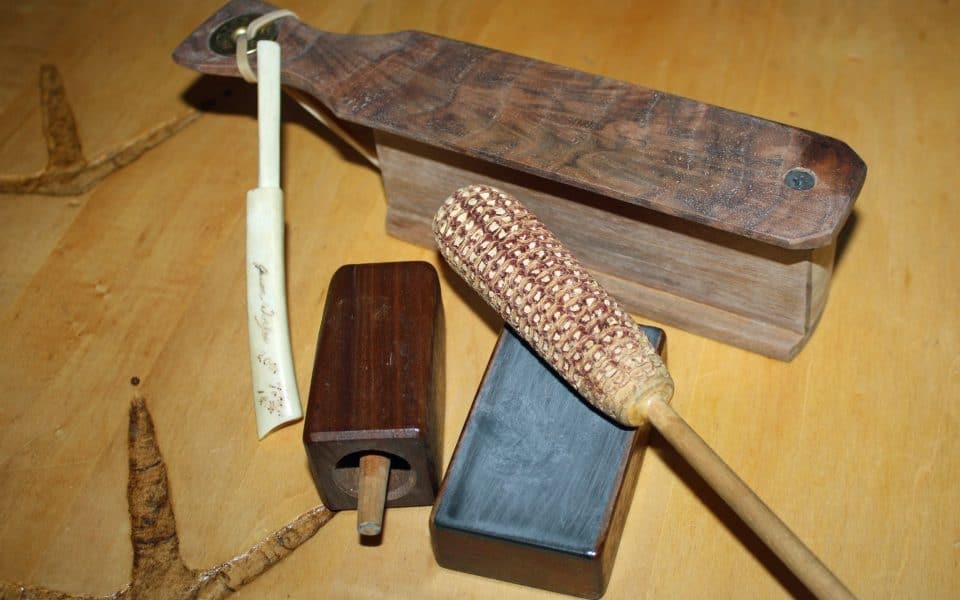There’s something special about the connection one has to an animal they’ve called up. For millennia, man has been enticing game animals, both feathered and furred, within range of taking. We, turkey hunters, hold a special place among those who take to the woods with hopes of calling up a meal or, more often, a memory. From turkey calls fashioned from a single wing bone by the Powhatan ages ago, to modern-day factories churning out hundreds of calls a day, turkey hunters have been striving to create that perfect instrument of deceit. The evolution of that instrument is one that many hunters seldom consider each time they pull out their favorite friction call or pop in that new diaphragm call. It’s a story that’s very much a part of our history….the turkey hunters history.
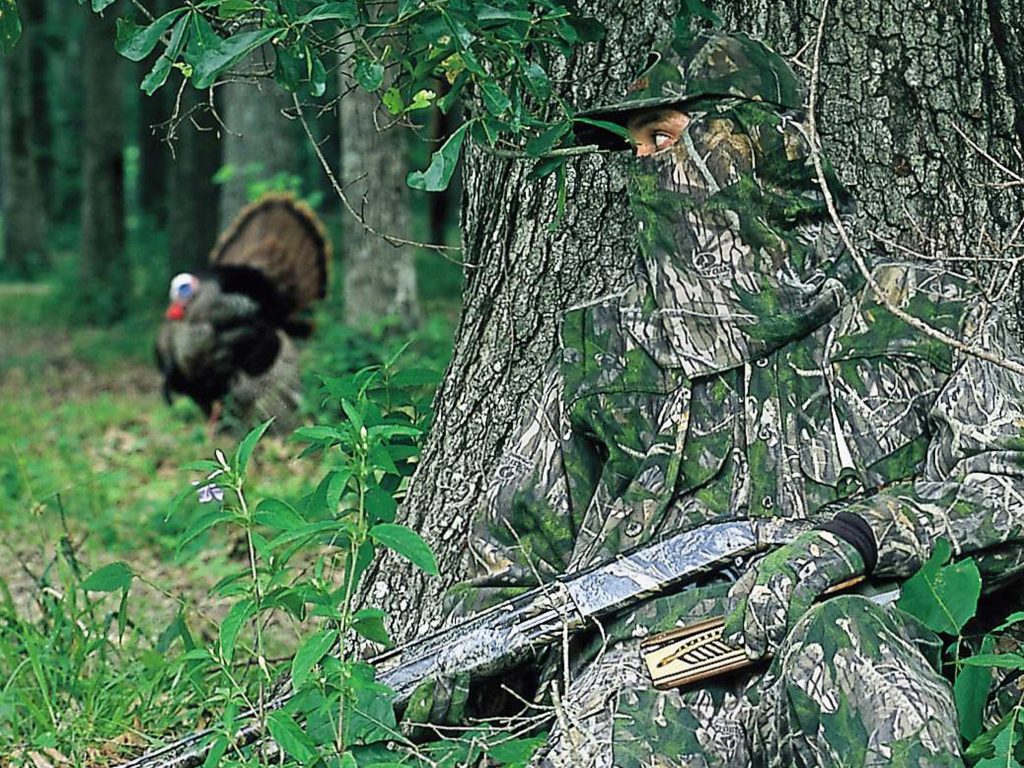
The story of the turkey call and a discussion of the evolution of turkey calls isn’t so much a story of the call itself as it is the story of hunters who were looking for a better, more effective means of coaxing this fantastic bird to within range and hopefully onto the table. Each type of call carries its own unique story of change over time, and I dare say it will continue to change with time. This attempt to discuss those changes should be considered similar to a quick sip of well-aged bourbon. You know there is more to its story, and something about it makes you want more. With that said, I highly encourage readers to dive into their own study of the most authentic instrument of deceit, the turkey call.
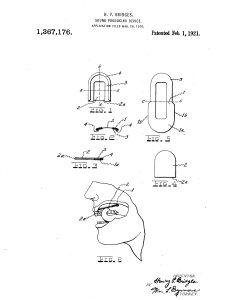 Due to the fact that the wild turkey is native only to America, I feel confident in saying the Native American was the first turkey hunter, and most definitely the first to attempt to fashion a turkey call. Wing bones believed to be used as game calls have been found in several excavations in America, but I believe it’s safe to assume that the very first turkey call was most likely the leaf from a suitable plant. According to many, Black cherry (Prunus serotina) or Carolina jessamine (Gelsemium sempervirens) seems to be a likely candidate for a supply of leaves. Appropriately held in the mouth or folded between the fingers and blown across, an experienced user can produce some very suitable calls. It would be around the turn of the 20th century that rubber, coupled with wood or lead frame, would mark the beginnings of what we know today as the diaphragm call.
Due to the fact that the wild turkey is native only to America, I feel confident in saying the Native American was the first turkey hunter, and most definitely the first to attempt to fashion a turkey call. Wing bones believed to be used as game calls have been found in several excavations in America, but I believe it’s safe to assume that the very first turkey call was most likely the leaf from a suitable plant. According to many, Black cherry (Prunus serotina) or Carolina jessamine (Gelsemium sempervirens) seems to be a likely candidate for a supply of leaves. Appropriately held in the mouth or folded between the fingers and blown across, an experienced user can produce some very suitable calls. It would be around the turn of the 20th century that rubber, coupled with wood or lead frame, would mark the beginnings of what we know today as the diaphragm call.
Many believe the diaphragm is a relatively recent invention, but the first documented diaphragm-like call was patented in 1867 by Samuel McClain and called simply a “Whistle.” Many are unsure if it was intended for hunting, but it was, in fact, a tool for the imitation of birds. I find it hard to believe, and will put myself on the spot and say someone most likely used it to fool a turkey. The first advertised diaphragm call was patented in 1921 by H.P. Bridges and was called a “Sound Producing Device.” A 1923 ad in Field and Stream advertised it as “The best imitation of a turkey call in existence.” Many of today’s turkey hunters would still agree, as there are an unbelievable number of modern variations, and its popularity is close to unmatched.
Let’s take a quick step back in our discussion to the wing bone used by the true, first turkey hunters, the Native Americans. As far back as 6500 BC, Native Americans were crafting wingbone yelpers. A multi-piece wingbone call was found in a rock overhang in Tennessee, and it has been documented that the Powhatan of eastern Virginia used a single-piece version. The earliest accounts of modern hunters referring to its use can be found in an 1849 book by P. Hawkers titled, Guns and Shooting. He describes an Allegheny mountain hunt in 1829, in which the wingbone yelper was used. These wingbone yelpers would eventually lead to today’s modern version, often termed the trumpet yelper.
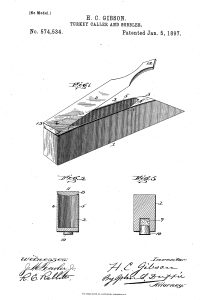 A discussion, if only brief, of the trumpet call, must include the names Jordan and Turpin. A complete volume could be written on both men, but I will attempt to heighten your interest in the next couple of paragraphs.
A discussion, if only brief, of the trumpet call, must include the names Jordan and Turpin. A complete volume could be written on both men, but I will attempt to heighten your interest in the next couple of paragraphs.
In an 1881 issue of Forest and Stream, Charles Jordan described how to make a wingbone and cane yelper and would later further that discussion in twenty-one articles for Shooting and Fishing, all running between the years of 1898 and 1899. These articles and the belief that he was making yelpers as far back as the early 1870s would solidify his standing as the father of the modern wingbone yelper. His calls, of which few still exist, are some of the rarest and most sought-after yelpers for today’s turkey call collector.
Tom Turpin, known for some fantastic duck calls and attempts at Gibson-style box calls, carried the trumpet yelper into the 20th century. Turpin’s first yelper designs would come just before the 1920s, and eventually be sold to Roger Latham in the late 1950s. Turpin’s famous No. 3 yelper would stand as a model for today’s modern trumpet calls. That No. 3 yelper, if an original can be found, is another collector’s dream find.
The first patented friction call would come in 1897, and be issued to Henry Gibson of Dardanelle, Arkansas. There’s little doubt that the first friction calls came much earlier, but it is Gibson who set into motion what would eventually become the modern-day box call. As far back as the 1830s, hunters used different variations of friction-type calls. Usually, two-piece type calls, but it would be Gibson’s design in 1897, in which the pivoting lid was first seen. It would be the call that makers such as Turpin, Lathem, and Lynch would emulate. An interesting aspect of Gibson’s box call is that he only patented an idea, as his design had no dimensions. This left open the possibility for continued experimentation with new materials and dimensions. It’s safe to say that Gibson’s basic design still stands strong today and has been imitated more than any other call. The number of gobblers that have fallen to his call design can only be imagined.
The same year the mighty Titanic sank, we would see the first patented version of today’s slate call. In July of 1912, a doctor named Wade H. Saunders would create what would become known as the “Simplex Turkey Call.” A simple piece of slate and what was then termed a “tone tube with vibrating needle,” better known today as a corn cob striker with peg, would hit the market at $14 per dozen. As time rolled on and years became a memory, we would see the continued introduction of several spins on the friction call concept. From the push button yelper patented in 1923, to the scratch box, to the various use of glass, crystal, aluminum, and ceramic used in modern versions of the Simplex Turkey call, the world of turkey calls has been and will be forever changing.
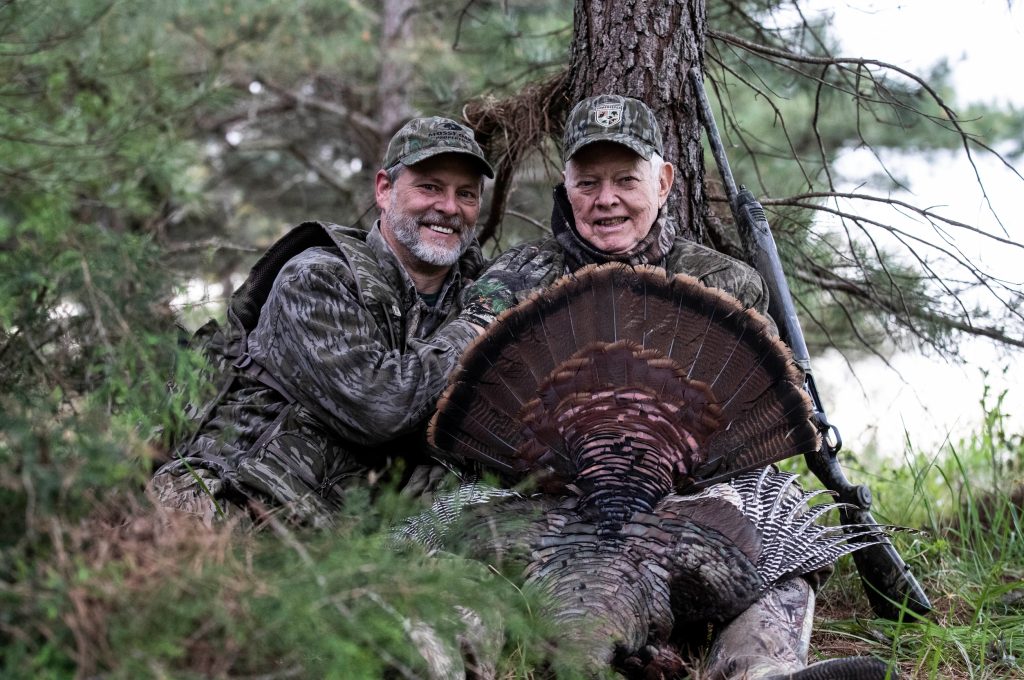
As I noted above, the changes made to each type of turkey call have overlapped and intertwined to build one of the most exciting stories in the history of game calls. The information I’ve laid out for you above is minuscule in terms of details and stories. I highly encourage you to jump in and learn all you can about the history, not just of turkey calls, but the history of this grand thing we call turkey hunting. The connection and appreciation it will bring to your next hunt cannot be overstated.
Much of the information found in this article can be found in the 1994 book by Howard Harlen, titled Turkey Calls, An Enduring American Folk Art. It’s one of many books I highly recommend you search out if you’re interested in learning more about the evolution of turkey calls – or maybe building your own. In closing, remember to pass on that newfound knowledge to a youngster or someone new to turkey hunting, and above all else, always put the future of the wild turkey first… we want the evolution to continue.

